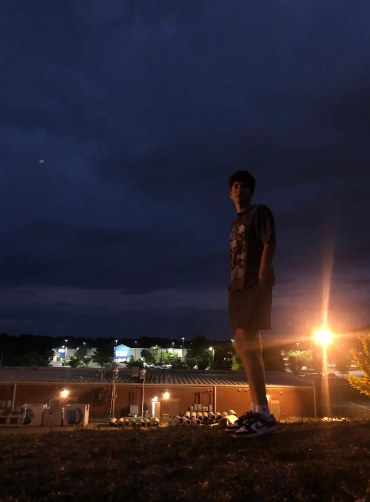Most people recognize Halloween on October 31, a holiday filled with ghouls, goblins, and ghosts, but with all this celebration Dia de los Muertos, celebrated on November 2, is often overlooked.
“Día de los Muertos (Día de Muertos), or Day of the Dead, is a Mexican holiday celebrated on November 1st and 2nd, dedicated to honoring and remembering loved ones who have passed away. It combines Indigenous Mesoamerican traditions with Catholic influences from Spanish colonization,” typed Yamid Barbosa, staff, via email.
The holiday is a day to welcome back the spirits of the deceased which are said to return to the living world during this time of celebration. Families often celebrate the occasion with lots of joyful and vibrant celebrations like visiting and decorating relative tombs, family gatherings, and creating ofrendas.
Ofrendas, better known as alters, are a place to display deceased relatives’ photos, to welcome them back into the world of the living, they are decorated with the traditional flower marigolds, the deceased’s favorite foods, and drinks, along with candles, sugar skulls, and so much more.
“The origins of Día de los Muertos trace back to ancient Mesoamerican cultures, such as the Aztec, Maya, and Toltec, who held festivals to honor their ancestors. When Spanish colonizers arrived in the 16th century, they brought Catholic beliefs, and Día de los Muertos blended with the Christian observances of All Saints’ Day and All Souls’ Day. This fusion, or syncretism, created a unique celebration that honors death as part of the natural cycle of life.” said Barbosa.
While rooted in Indigenous beliefs, Día de los Muertos has grown to symbolize Mexican identity and cultural pride, celebrated with music, dance, and art.
“I celebrate Dia de los Muertos with one side of my family… we set up an ofrenda, but that’s it,” said Chelsy Romero, junior.
In the United states Dia de los Muertos is not nearly as big or respected of a holiday as it is in Mexico. In Mexico, the holiday is celebrated with parades, music dressing up, and so much more. As an effort to bring those celebrations to the United States, movies like the Book of Life (2014), and Coco (2017) show different aspects of this holiday.
“I think they do [represent Dia de los Muertos because] they show the culture behind it,” said Romero.
The movie Book of Life follows a group of students visiting a museum on November 2, Dia de 3 los Muertos, as they hear the story of a young Bull fighter, Manolo, the town hero, Joaquin, and their friend Maria. The story that these kids hear takes place on November 2 as well, when Maria returns after years away.
This movie is not all about Dia De los Muertos, but shows characters and aspects of the holiday, like La Muerte, who represents the Joy and happiness of the holiday, Xibalba who represents the darkness, as well as the Land of the remembered and land of the forgotten. The movie also shows Dia de los Muertos celebrations like visiting the graves of relatives, and the bright and joyful decorations like marigolds.
The movie Coco, follows Miguel, a little boy who has big dreams of becoming a musician. It takes palace on DI a de los Muertos, and follows him through the land of the remembered as he searches for his great-great grandfather to be able to return to the land of the living.
This movie depicts a lot of key parts of Dia de Los muertos and the culture behind it. The movie shows the ofrenda of Miguel and his family’s deceased relatives, and shows in great detail, the different levels needed to make sure all the faces of the relatives are visible, the abundance of flowers, food candles and more. This movie also portrays alebrijes, which are spirit animals that in Mexican culture help the deceased on their journey to and through death.
Being born in America, I knew about Dia de los Muertos, but never truly celebrated it until I was introduced to these movies. These movies and other media like it showed me what this holiday was truly like, and how important it is. Over the years my family’s Dia de los Muertos celebrations have grown, we continue to grow them.
While you yourself may not celebrate the holiday, the history and celebrations are rich with culture and have a deep meaning for those who celebrate it.

My name is Andrew, and I will produce the most entertaining content for my fans. I will write about anything and everything. (Trust me I’ve tested it.)

Leave a Reply